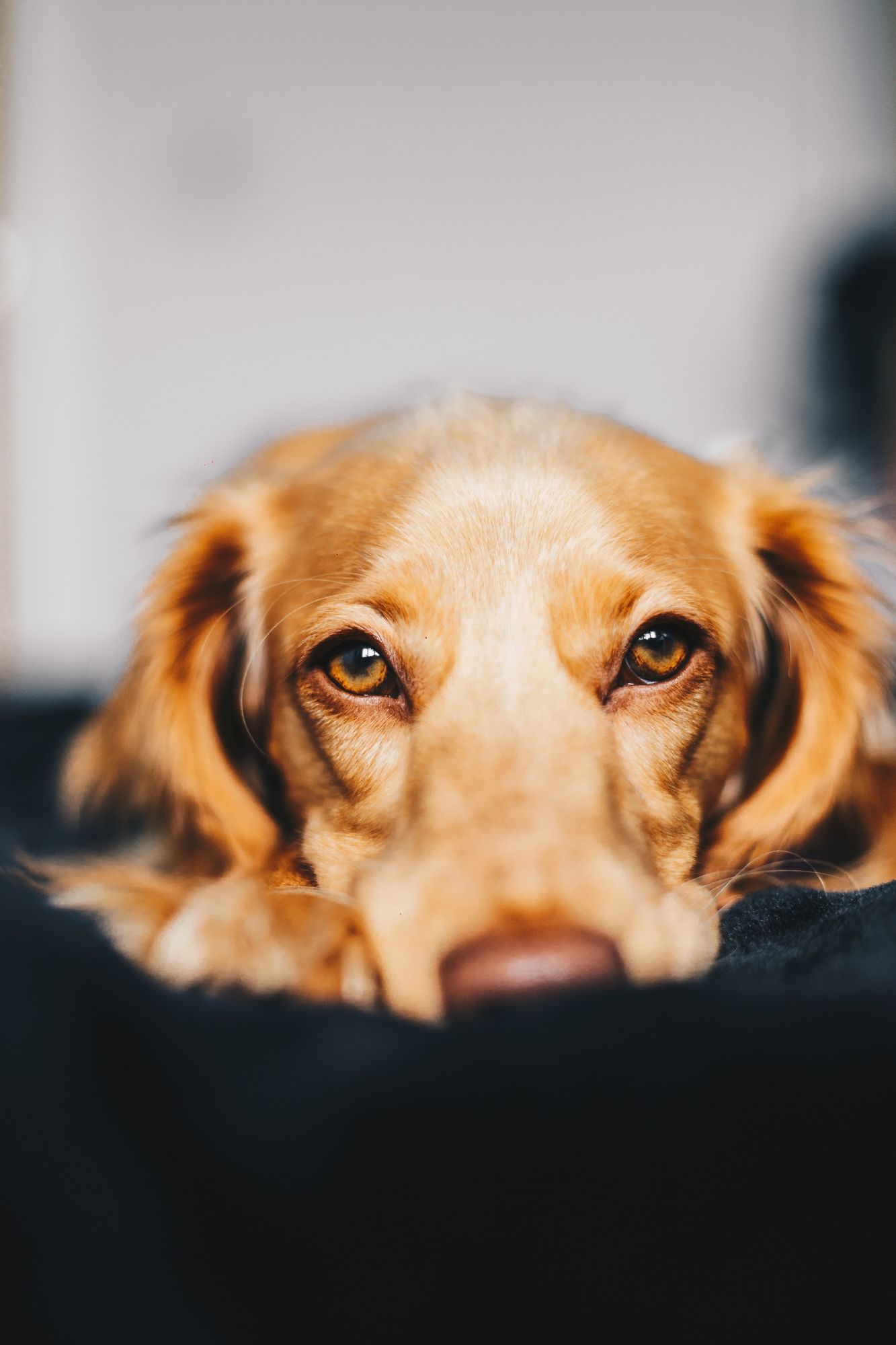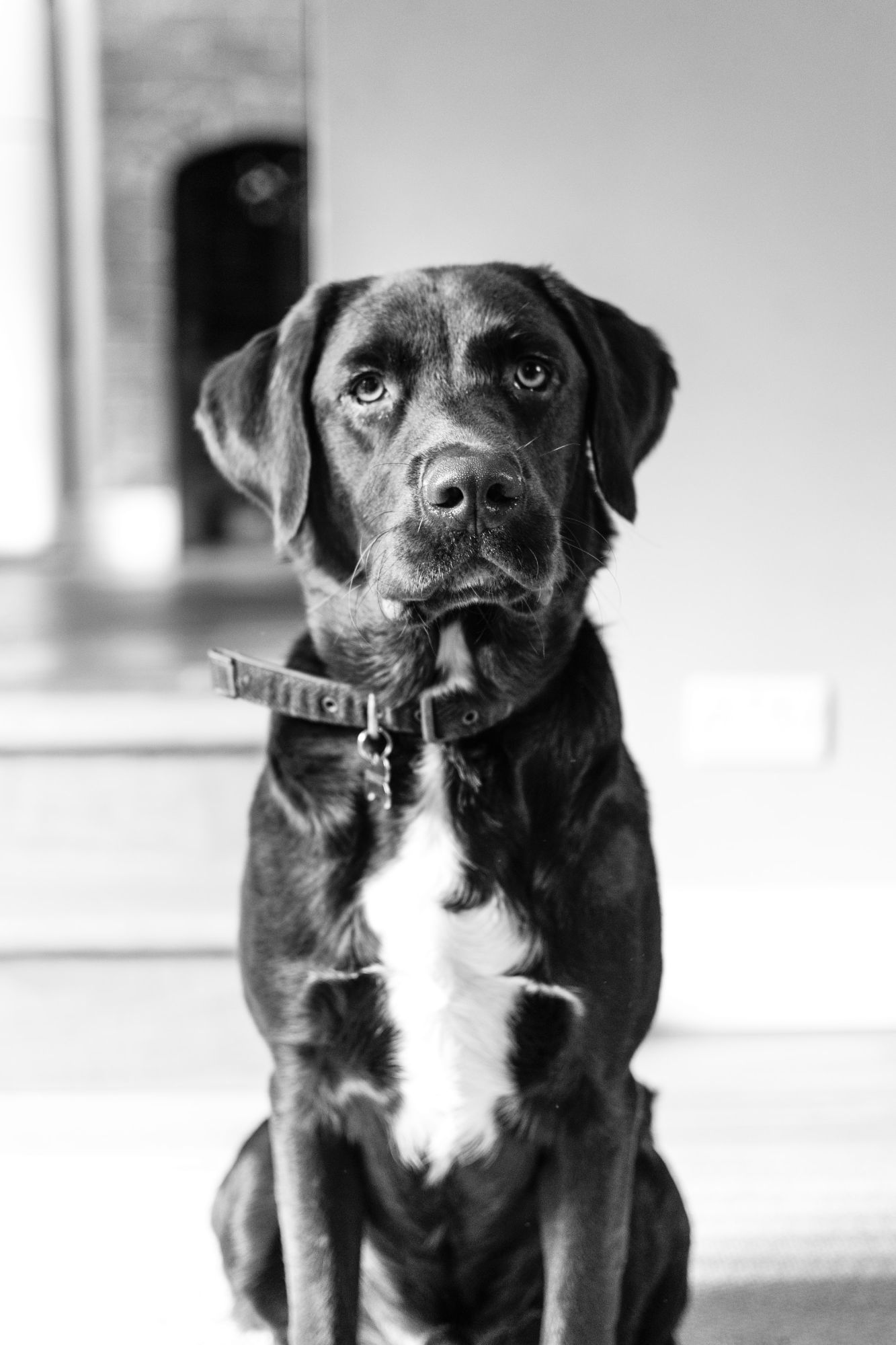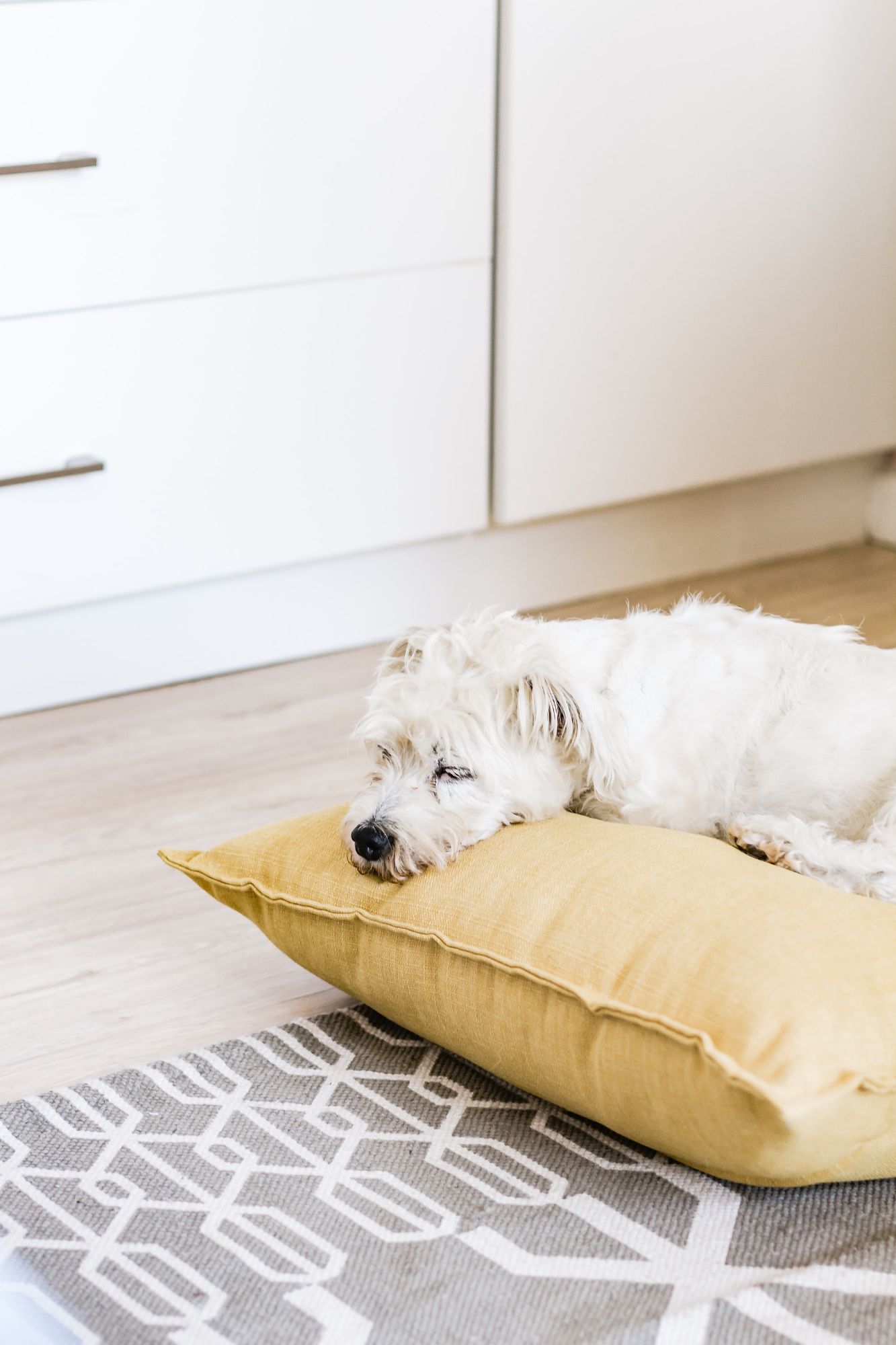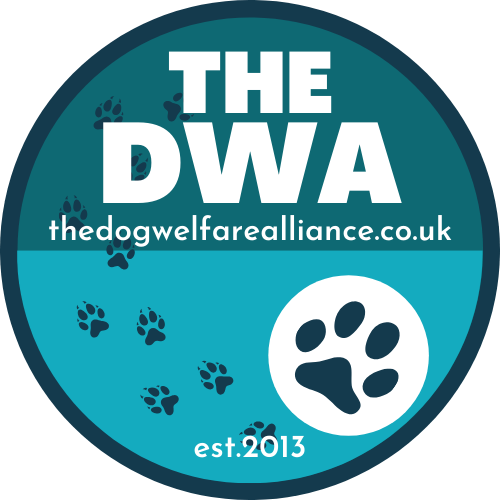Dealing with Separation Anxiety using Ttouch and other methods - by Toni Shelbourne
In my experience, separation anxiety can be one of the hardest behaviours to rehabilitate, not because it's impossible to achieve, just at some point in the training your dog has to go 'cold turkey' so to speak. Few of us can afford the luxury of staying at home rehabilitating our distressed dog until they feel comfortable spending time alone. Owners can feel trapped in their own homes, helpless and anxious themselves. In short it can rule your life. Separation anxiety can come in many forms; from a mild case of barking for a few minutes after you leave and not eating that tasty treat you left them until you return, to literally eating through walls. In both cases the causes can be the same and usually stem from insecurity and lack of confidence. These dogs tend to be clingy and can stick to you like glue. Even dogs left with a companion, be that another dog or human, can still suffer from the behaviour. The route of the problem could be as simple as lack of 'alone' training to dogs that over-bond with what they see as their safe, emotional prop; which is you. Rescue dogs can come from impossibly bad situations and need so much support that being left can be very scary. Others may have had something frighten them whilst left alone and are actually afraid of being left. Some just have that type of personality which means they will never learn to be confident without company 24/7. Whatever the degree of distress, the tips laid out for you below can be helpful in retraining your dog. For maximum results, rehabilitation should be dealt with on a number of levels at once. Although you need to be comfortable with the modality you use, rest assured you will have much more success if you mix several together. I have had success with using Tellington TTouch (TTouch for short), reward based training and either calming herbs, flower remedies or homeopathy (the last three are usually not mixed so I leave it to the owner to decide which they choose and seek out a qualified practitioner).


The first step is to boost your dog's confidence and this is where TTouch is useful. Simply described, TTouch works by improving the posture of the animal. Posture affects behaviour so as he begins to use his body in a more balanced manner the behaviours often start to diminish or disappear. Tension patterns held in certain areas of the body always produce the same issues and with separation anxiety the hind quarters, tail and mouth often need attention. Hind quarter and tail tension are usually linked with fear-based issues and the mouth emotions. These areas could feel tight, have hot or cold patches or the dog might be reluctant to be touched in these areas. Inside the mouth can feel dry or very hot and the dog may have a tendency to bark, chew, bite or be reluctant to wear head collars. Simple TTouches, (specialist ways of moving the skin in circles, lifts and strokes), can be effective at releasing these tense areas, helping the dog become emotionally, mentally and physically balanced.
To start, use your whole hand to simply feel all over the body looking for tension spots and make a note of what you find. Once you have completed this assessment, an easy TTouch to start with to settle your dog is ear strokes. Mould your hand around the ear with thumb on one side and fingers on the other and with only one layer of ear flap between your fingers stroke from the base of the ear to the tip. This should be done with good contact but not too firmly. Change your hand position often to cover the whole ear. After a while swap hands and do the other ear. Your spare hand can be used to lightly hold the collar or be placed around the chest to contain the dog. It is often nicer for the dog and safer for you to do this work from behind and to the side of your dog. Ear work can calm and bring the breath rate down so is excellent for settling an anxious animal. You can also use this TTouch in the vets, when fireworks are going off or any time your dog feels anxious or scared.
When doing the TTouches, just the weight of your hand is enough to move the skin but you can be even lighter if the dog appears wary of the work. At no time should you press into the body, you are only working with the skin. The Clouded Leopard TTouch can be useful for fearful, stressed, nervous and barky dogs. Place your four finger pads and thumb on the dog's body, the fingers should be curved and the thumb is to support your hand, it looks a bit like a leopards paw. Move the skin from six o'clock, going in a clockwise direction, all the way back round to six and continue up to nine, stop, then move about a hands width away and repeat. Make sure you start the circle with a lift, in general this means starting at the lowest point of gravity i.e. six is towards the belly and twelve is up towards the back. Again work from behind and to the side of the dog and make sure your hand is relaxed and your wrist is straight. If he is calm take about two seconds to complete your circle and a quarter, or if your dog is anxious initially take this to a one second circle until he seems to be calming down. Remember you are moving the skin under your fingers, not your hand over the skin. Again use your other hand to contain the dog or simply place somewhere on the body in support. The Clouded Leopard TTouch can be used all over the body, even in areas such as the tail and face, and will be in preparation for more invasive TTouches in these areas. If your dog appears reluctant for the work to be done in a particular area, come back to somewhere he likes the work and dip in and out of the areas of concern. I find it's best to start on the dog's shoulder area and work out from there, returning to this area if need be.

Mouth work can also be very important for this behaviour. To calm the emotions you need to lightly rub the gums; dampen your fingers if the mouth is very dry. Again doing this from behind and to the side is best, with your hand placed under the dog's chin for support without restricting movement, but many dogs need to have an intermediate step before accepting this TTouch. If your dog can take treats gently, take a small chewy treat and hold it between your fingers and thumb, stand to the front of your dog and allow them to sniff and nibble at the treat while with your other hand you can lightly rub the gums, swap hands to do the other side. Please note this should only be attempted if the dog has a gentle mouth and won't snap at your fingers, and should only be done for short periods initially.
The tail can often feel very stiff and releasing this tension can be key to the dog's confidence. Once your dog is happy to have the Clouded Leopard all over the tail, gently support with your hand at the base and move the whole tail in circles, these movements need to be tiny and within the normal range of movement; practise on your finger first to see how little movement is needed before it becomes uncomfortable and then apply the gentle rotation to your dog's tail. At first it may be very hard to move and wooden, you will probably need to dip in and out as your dog will show reluctance for you to touch him in this area but after a while the range of movement should improve and the dog becomes happier with this TTouch. If in doubt, go back to the Clouded Leopard.
A body wrap is an essential tool for anxiety of any kind; this is a stretchy bandage which we place around the dog, providing the feeling of comfort and security, a bit like a portable hug! A T-shirt can have the same affect, but if a human shirt is used, make sure it goes on upside down i.e. the clothes tag is under the chin not at the back of the neck. If using the body wrap, let the dog sniff it first and then find the middle of the bandage. Place the mid-point on the dog's chest, just below the collar, and bring each end up over the shoulders and cross them over the back so it looks like a cross over their shoulders, pass each end under the belly and bring them back up to the top, tie a double knot just off the spine. The section where the knot is can then be slid a little further down the back towards the hind quarters and should sit maybe three quarters of the way down the back. Make sure the tension is the same at all points by placing your hand under the bandage at several points; if too tight in one area rob Peter to pay Paul until it is the same all over. The bandage or T- Shirt shouldn't be tight. Feed your dog some treats or play with him for a while until he forgets about the wrap. If he shows a lot of interest in it, take it off and do more TTouches before trying again. This can be left on for short periods at random times but should never be left on when the dog is unsupervised.
You can perform TTouch sessions on your dog for short periods every day or every other day; twenty minutes daily in total is more than enough. Do the work when you are calm and can pay attention to what you are doing. Avoid doing the work directly before leaving as you don't want your dog to link this work with you going out. The work will be effective for many hours so working with them an hour or so before leaving will still help. You can also use it just prior to a training session to help calm and focus your dog and even during training if he is finding it hard to cope. Doing TTouch will not reinforce the behaviour but be careful not to do other things that might, like talk to him in an overly reassuring way.
For 'alone' training, work must start with you still inside the house. After calming your dog and body wrapping him, you could supply a really nice treat that takes some time for him to eat. Once engaged with the treat quietly leave the room and shut the door but return almost immediately before your dog panics. Repeat several times and over several sessions if your dog is still concerned at this stage. Once you can walk out and return with ease, stay out for a few seconds, slowly increasing the length of time. What you want to avoid is the dog barking or pawing at the door. If at any time he does this reduce the length of time left back to where he was happy and work up from there again. Ideally, train this in different areas until he is happy to be left in a room anywhere in the house with you in another part for a good length of time. Once this has been achieved, start from stage one with going out the front door i.e. walk out and straight back in again, increasing the length as your dog starts to cope. Be warned: do not make too large a leap. The most common mistake is people think their dog is ok for ten minutes so next time I'll try thirty minutes, but this will set you back.
Another method I have used is an object to symbolise you leaving. This is good for really clingy dogs that you can't even leave the room for a second without them panicking. Pick an object that the dog doesn't know, like an ornament which you normally keep out of sight of the dog and place it in his view. While the ornament is on display, totally ignore the dog, don't look at, talk to or interact with him at all, even if he touches you. Then put the ornament away and make a fuss of him. Increase the time length until the dog is comfortable and knows that when the object is out he will have no interaction with you and will settle down. Only then can you start placing the object and leaving the room, going through all the stages in the 'alone' training already described. The ornament isn't usually necessary but for extreme cases it can get you on the first rung of the ladder.

While carrying out the TTouch session and training, the use of herbs, flower essences or homeopathy can be useful tools to combine. This can just take the edge off the emotional state and help everything else work more efficiently. My advice would be to contact a homeopathic vet or trained practitioner in flower essences etc. You can buy books or research the methods on the internet, but you risk not applying the correct remedy and also care must be taken not to mix certain modalities so be careful.
As mentioned before, the biggest problem is the length of time it can take to re-train a dog and some will never be comfortable alone. While training, the use of doggy day-care can be invaluable as we don't all have the luxury of being able to stay home to care for our distressed dog. Whatever happens, the key is to understand why they behave in this manner and to treat the situation accordingly and empathetically.
Toni Shelbourne has been working with dogs for over 24 years and is one of the highest qualified Tellington TTouch Companion Animal practitioners in the UK. She is based in Berkshire. Her first book, The Truth about Wolves & Dogs, is out now and available from all major on-line book stores or direct from www.hubbleandhattie.com
For info on Toni's workshops, demos, talks and one to one session visit www.tellingtontouch.co.uk
To find a practitioner near you visit www.touchtteam.co.uk
